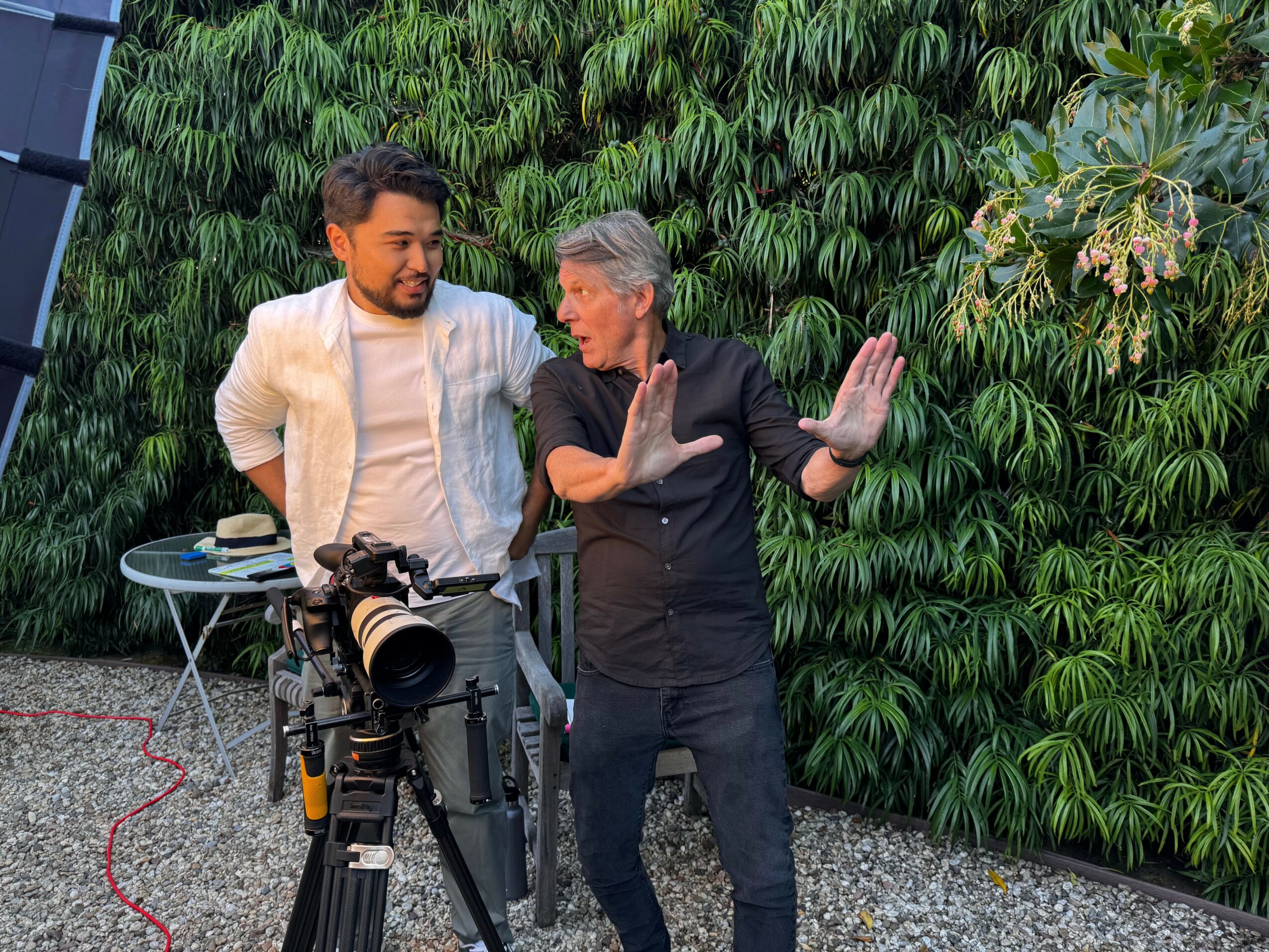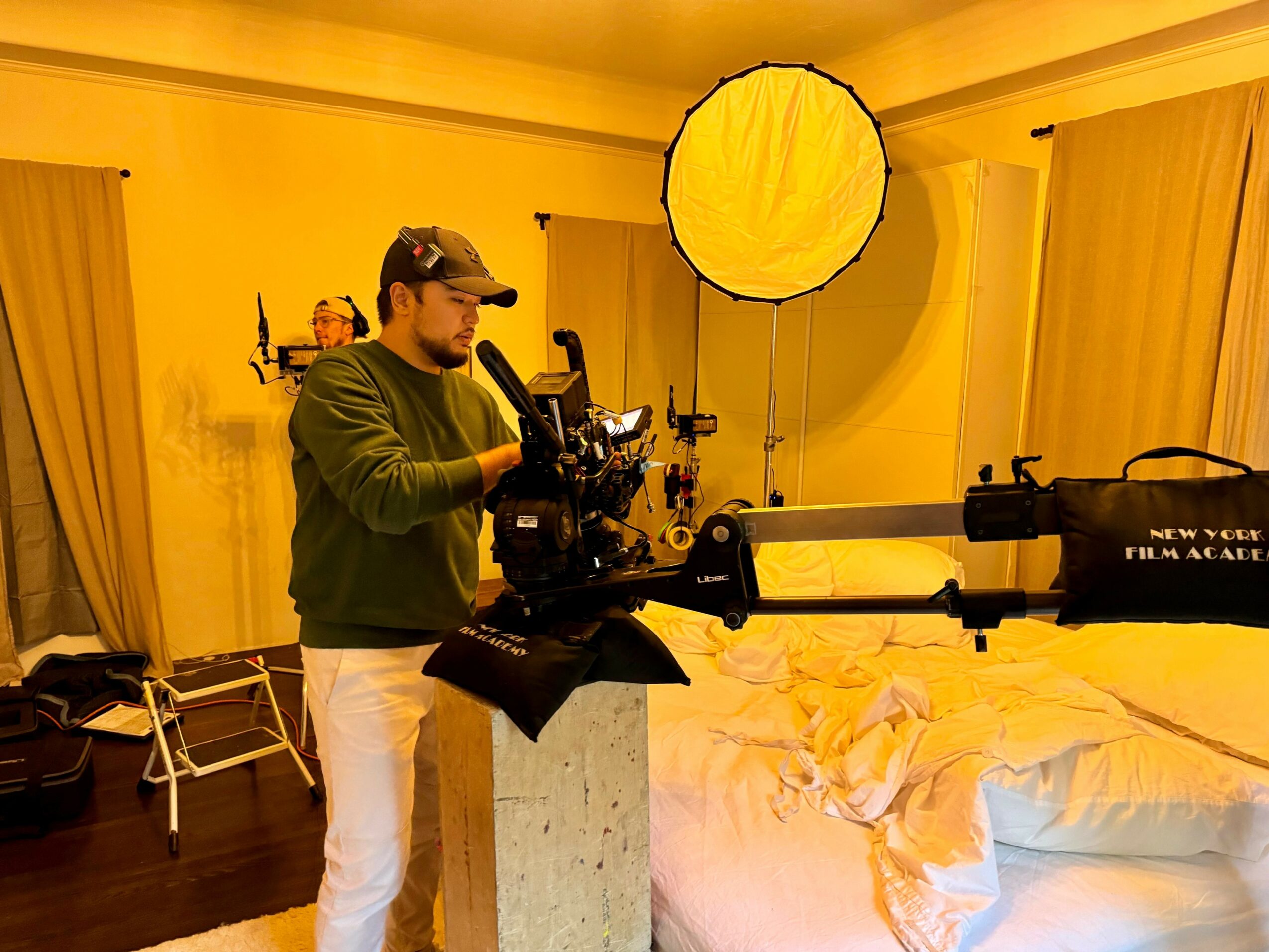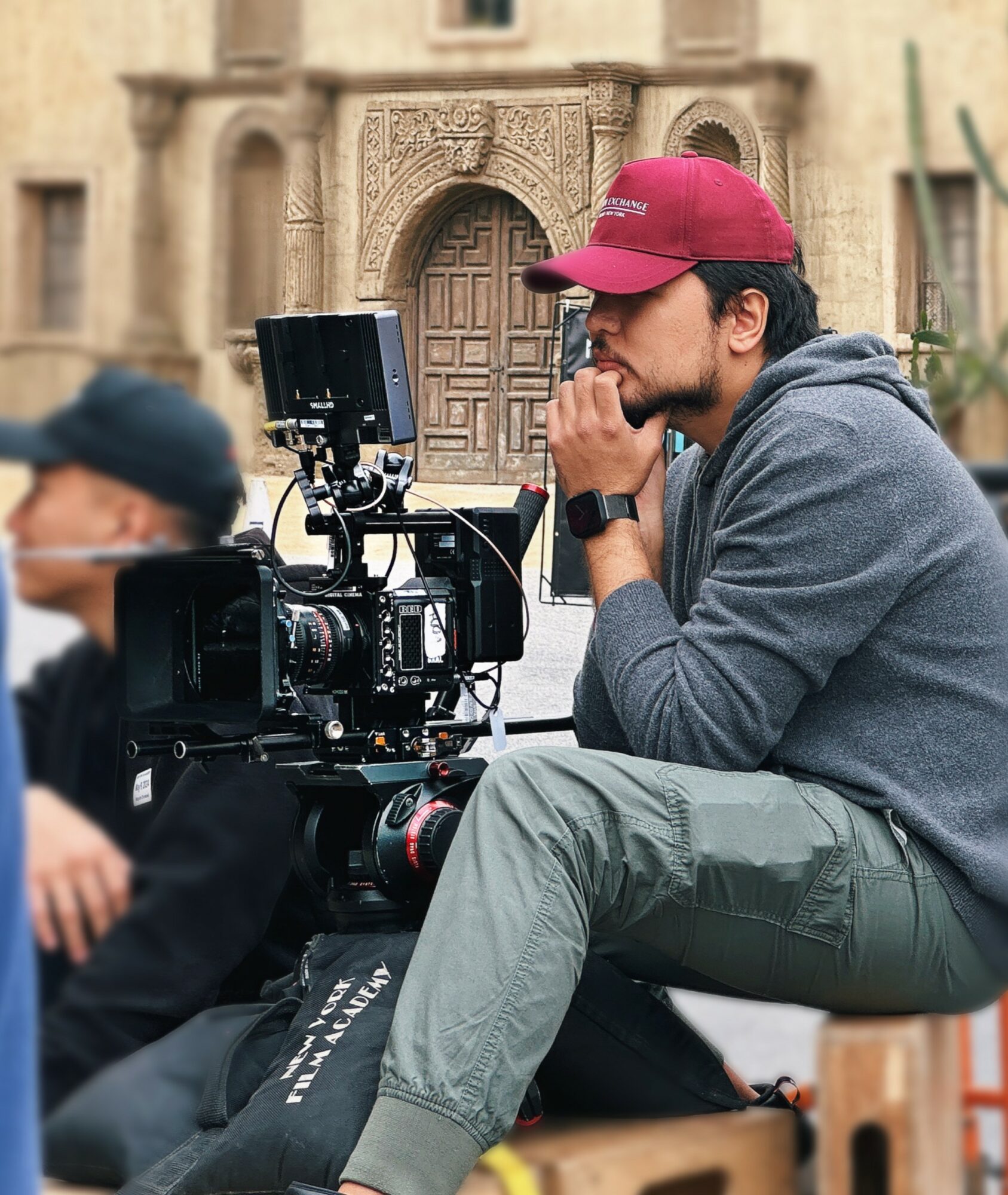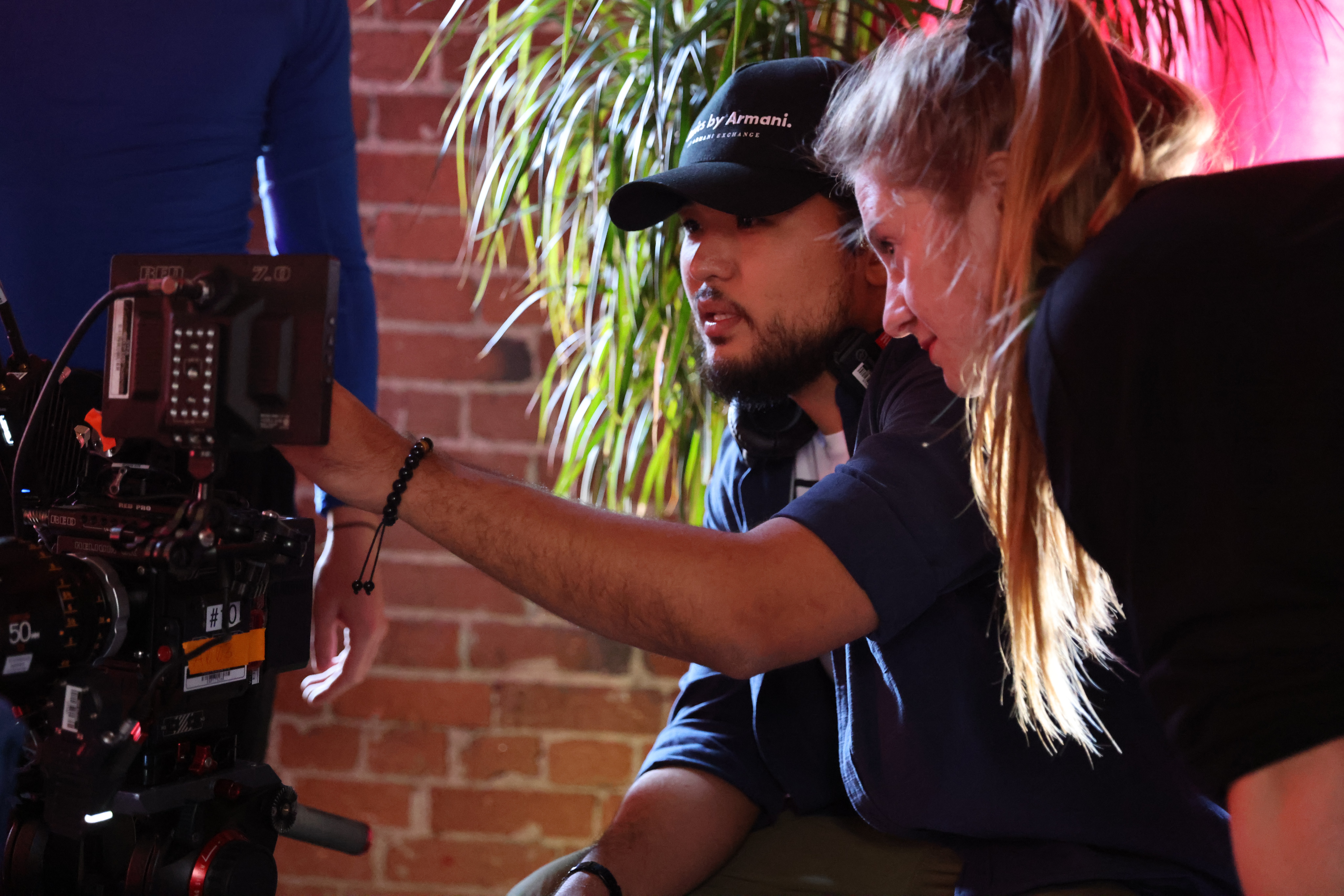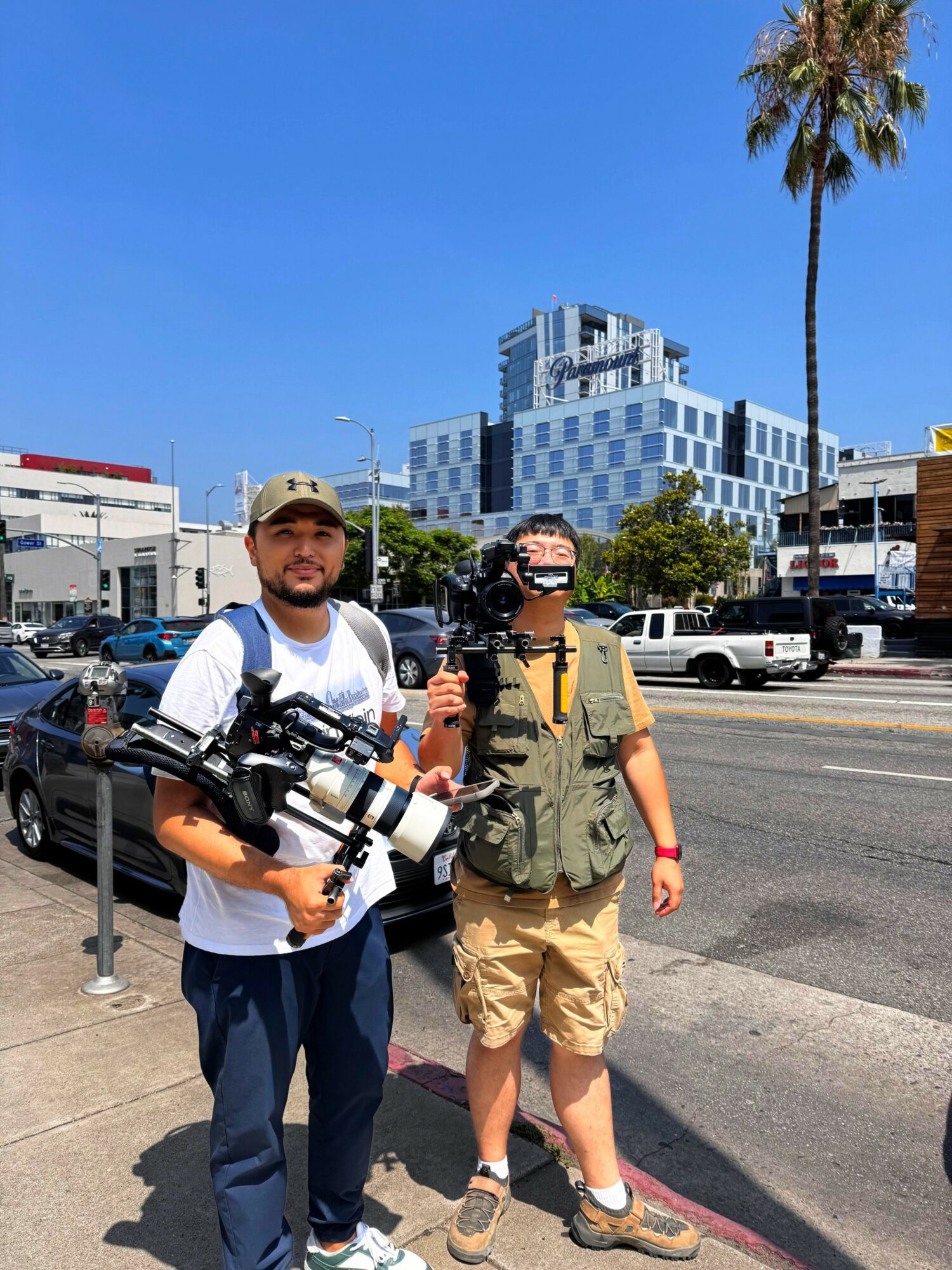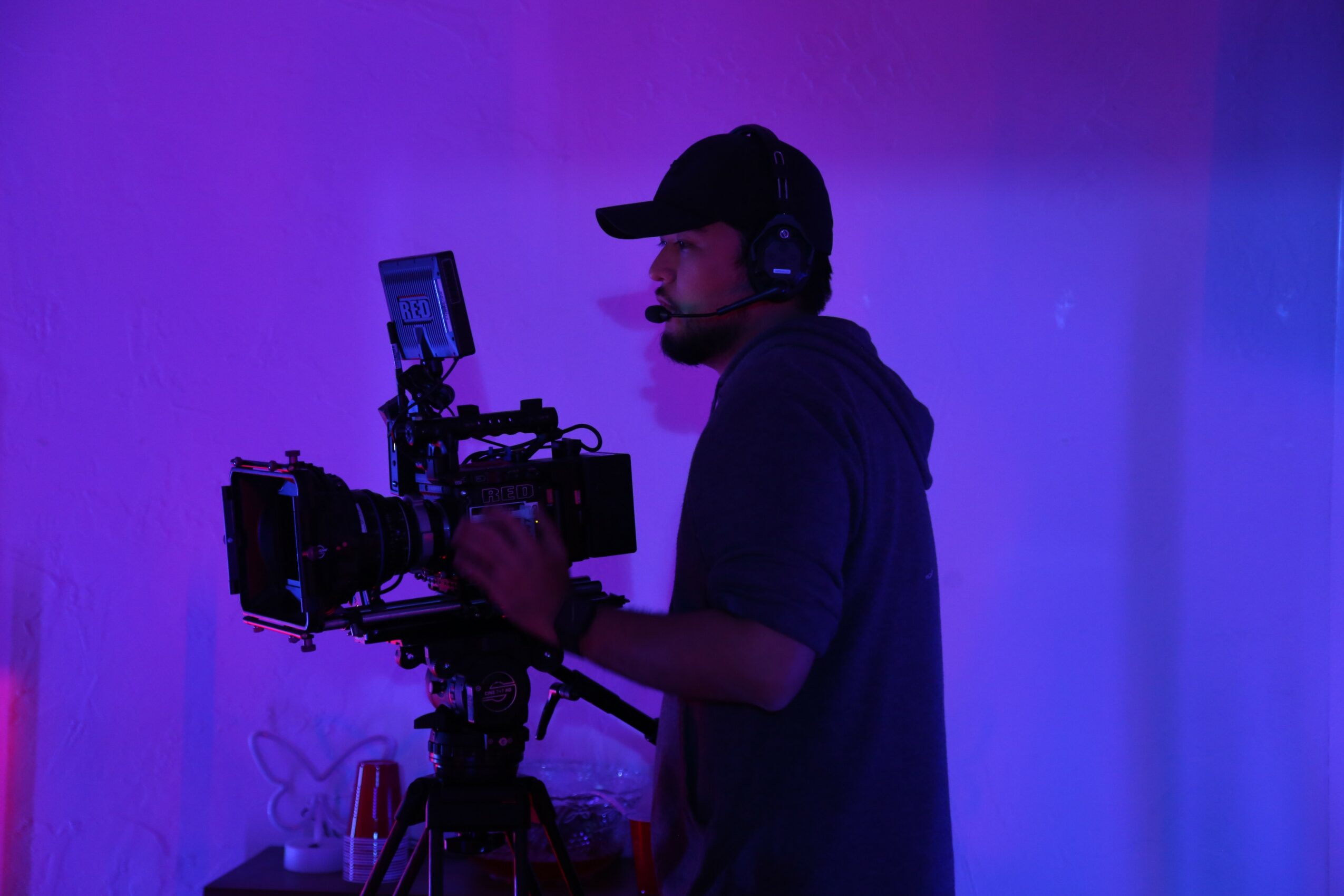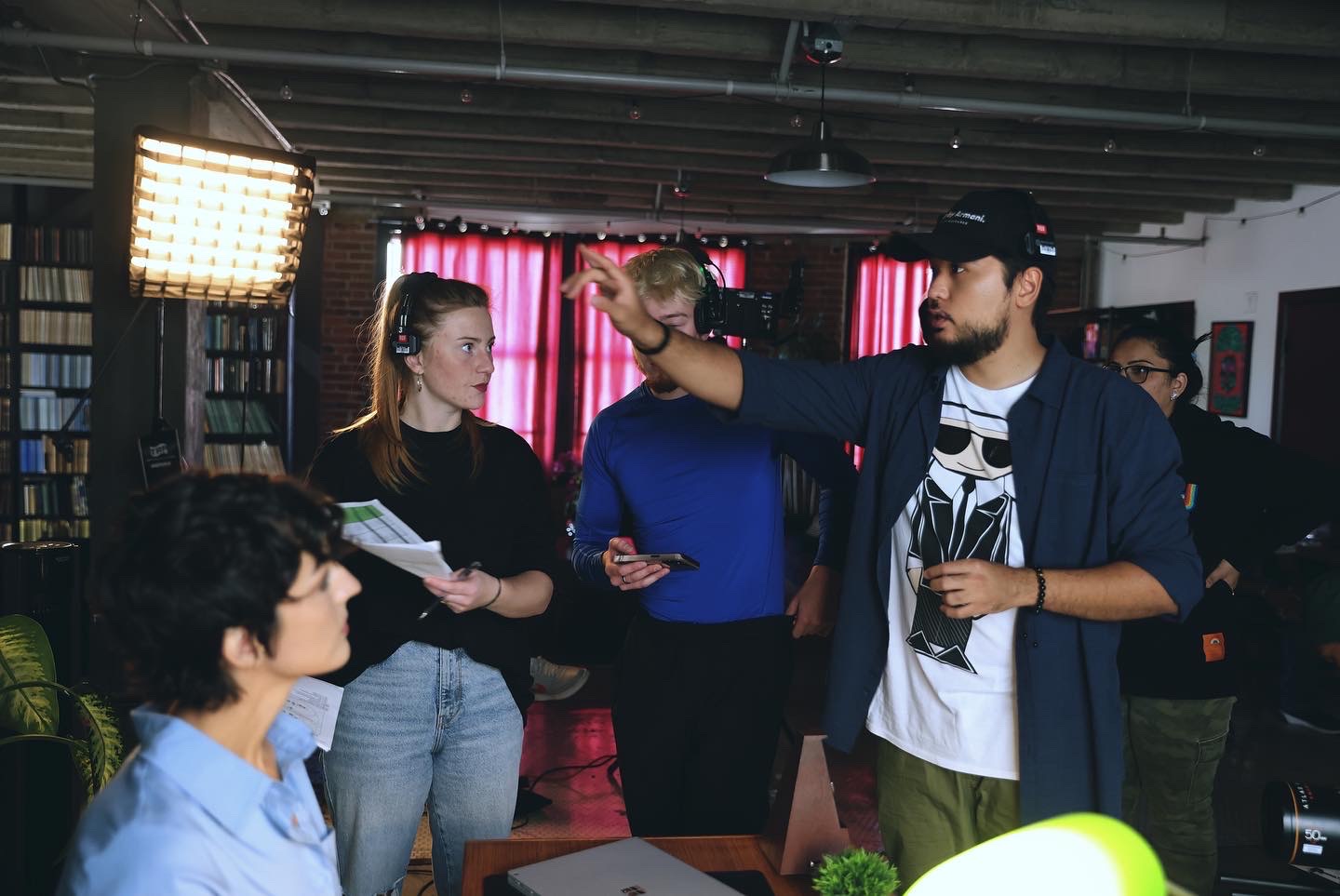

We recently had the chance to connect with Arman Sayat and have shared our conversation below.
Hi Arman, thank you for taking the time to reflect back on your journey with us. I think our readers are in for a real treat. There is so much we can all learn from each other and so thank you again for opening up with us. Let’s get into it: What is a normal day like for you right now?
As a filmmaker, my day doesn’t exactly follow what most would consider “normal.” It’s a mix of creative rituals, intense work sessions, and the occasional all-nighter—which I’m trying to cut back on for the sake of my health. Still, the days are often so packed that even when I sleep, it feels like I’m not really dreaming.
I usually wake up around 5 AM. That early silence is sacred to me—it’s when I feel most in tune with my thoughts. I’ll either start the day watching a powerful film that’s recently come out, or I’ll write. I never stop writing. Whether it’s story ideas, scenes, or full scripts, I’m constantly building a personal library of material that may not be relevant now, but will find its place in time.
Interestingly, I delay my first cup of coffee for about two hours. That slow, mindful start helps me stay grounded and stress-free. After that, I hit the gym to get my body moving and sharpen my focus for the rest of the day. One of the benefits of rising early is that, even after all that, the day is still ahead of me.
From there, every day looks different. If there’s a shoot, I’m on set for most of the day. Other times, it’s packed with meetings or Zoom calls. And then there are the post-production days—those long stretches of editing where I’m glued to the screen, building the film piece by piece. I often handle much of the editing myself, even though I have a team. I like to stay hands-on with the process, making sure the vision is executed down to the frame.
It’s definitely a busy life, but I always carve out time for my family. At least a couple of days each week are set aside just for them. When I’m with them, everything else fades into the background—and nothing matters more.
Can you briefly introduce yourself and share what makes you or your brand unique?
My name is Arman Sayat, and I live and breathe cinema. I’m a filmmaker, first and foremost—an artist driven by story, emotion, and visual poetry. Born in Central Asia and now based in Los Angeles, I’ve had the privilege of working on both sides of the globe—creating films that bridge cultures, challenge perspectives, and speak to something deeply human.
I’ve directed and shot narrative features, short films, music videos, documentaries, and commercials, with work spanning from the Universal Studios backlot in Hollywood to remote towns and cities across Eurasia. My passion lies in crafting cinematic experiences that are emotionally resonant and technically refined. As a cinematographer, I’m obsessed with light, composition, and movement. As an editor and colorist, I dive into the rhythm and soul of the story. And as a director, I hold it all together—shaping performances, tone, and vision with clarity and care.
I work under my production company, Films by Insomniac, which represents more than just late nights—it stands for obsession, dedication, and the restless pursuit of beauty and truth on screen. We tell stories that don’t just entertain, but linger.
What sets my work apart is the holistic approach—I’m involved in every layer of the process. From script development and directing to shooting, editing, color grading, and even sound design, I believe in sculpting the film all the way through. Lately, I’ve also been pioneering the vertical film format—exploring new dimensions of visual storytelling for the next generation of platforms, without sacrificing cinematic quality.
At the core of it all is a simple belief: that film is one of the last sacred spaces where truth can be felt. I want to make people feel something real. That’s what drives me every day—and what I’ll keep chasing for as long as I can hold a camera or cut a frame.
Okay, so here’s a deep one: Who taught you the most about work?
I’ve been incredibly fortunate in my journey. Earning my Master’s degree in Filmmaking from the New York Film Academy gave me more than just an education—it gave me access to true masters of the craft. I had the privilege of learning from real filmmakers, working artists who live the life they teach. Each of them left a unique mark on how I approach storytelling, leadership, and the sheer discipline that this art form demands.
I could speak for hours about the mentors who shaped me. Neil Casey, Bart Mastronardi, Nick Sivakumaran, Graham Tallman, Igor Torgeson, David Lewis Newman… and honestly, the list goes on. These are people who don’t just teach theory—they show you what it means to commit fully to your vision, to push through limitations, and to always serve the story.
They taught me that filmmaking isn’t just about talent—it’s about work ethic, empathy, precision, and relentless curiosity. I carry their lessons with me on every set, in every edit, and in every frame I create. Their guidance helped me become not just a better filmmaker, but a better collaborator and leader
Was there ever a time you almost gave up?
Yes. More than once, to be honest. I think every person—especially those walking a creative path—eventually finds themselves at a crossroads where they have to ask: Is this still worth it? Is this what I’m meant to do, or have I been chasing a dream that doesn’t want me back?
Filmmaking, for all its beauty, is one of the most unforgiving crafts out there. When you first enter the industry, you’re full of hope, passion, and big ideas. You believe in the power of story, in your voice, in your vision. But then reality hits. You realize very quickly that filmmaking—at least in the beginning—is more about sacrifice than reward. More about giving than receiving.
There were times when I was putting everything I had into projects—my time, my energy, my money—while the world around me moved on. Friends settling down into steady jobs. Bills piling up. Family members quietly wondering when I would “make it.” And it’s not just the financial strain—it’s the emotional toll. You watch people undercut the value of your work, see industry rates collapse as creators flood the market, and realize that talent alone is no longer enough. There’s YouTube, TikTok, Instagram—everyone is a filmmaker now. The noise is deafening. The space for patience, nuance, or mastery feels smaller every day.
And then there’s the pressure of having a family. When you’re alone, it’s easier to gamble with your future. But when you have mouths to feed, little ones looking up to you, a partner who believes in your dreams—you start to feel the weight in a different way. It’s no longer just about you. It’s about what kind of life you’re building for the people who trust you most. And in those moments—late nights after exhausting shoots, quiet mornings when the bank account is low, or after one too many rejections—you do consider quitting. You wonder if maybe it’s time to trade dreams for stability.
But here’s the truth: the people who reach the summit, the ones who create work that lives beyond them—they’re the ones who keep going when everything in them says stop. They’re the ones who break and rebuild, again and again. That’s what I had to learn. That every painful moment, every doubt, every failure—it wasn’t the end. It was part of the shaping process. It was fuel.
What saved me was my family. My wife and children were my light in the tunnel. Even when I couldn’t see the way forward, they could. They reminded me who I am—not just as a filmmaker, but as a man. They never let me forget why I started, and because of them, I never gave up.
Now, every film I make carries that struggle. Every frame is a quiet rebellion against the odds, a testament to the days I almost walked away—but didn’t. I don’t create because it’s easy. I create because it’s necessary. Because I believe in the power of cinema to heal, to challenge, to remember, to dream. And because I know that stories like mine—stories born from struggle—deserve to be told.
So a lot of these questions go deep, but if you are open to it, we’ve got a few more questions that we’d love to get your take on. Is the public version of you the real you?
Halfway—like most people, I think. We all try to be the best version of ourselves in public, don’t we? And the truth is, who we are shifts depending on where we are and who we’re with. Your friends know one side of you. Your colleagues see another. And your family? They probably know the most unfiltered version—the one that doesn’t need to perform or prove anything.
It’s not about wearing a mask or pretending to be someone you’re not. It’s just human nature. We carry different parts of ourselves into different rooms. On set, for example, people often see me as very focused, sometimes even intense or distant. I’m the guy who’s all about the work—strict with the schedule, disciplined with the crew, fully immersed in the vision. And I’ve had people come up to me later and say, “When I first met you, I thought you were kind of an asshole. But you’re actually a really nice guy.” And I get it. That intensity is part of how I protect the work, how I make sure the story gets told the right way.
But when I go home, I leave all of that behind. I step through the door and take off the armor. We don’t even talk about work most of the time. Home is sacred. That’s where I get to just be a husband, a father, a man trying to raise his kids with love and patience. My family gives me balance. They remind me of who I am beneath the titles and the pressure.
So is the public version of me the real me? Yes. But it’s only one part of the whole. The rest—the quiet parts, the vulnerable parts, the dreamer behind the lens—that lives at home, in the early hours of writing, in the moments nobody sees. And I think that’s what keeps me grounded. That’s what keeps me human.
Okay, so before we go, let’s tackle one more area. What is the story you hope people tell about you when you’re gone?
When I was ten years old, I used to daydream about my own biopic. I imagined people sitting in theaters or classrooms, watching a film about my life—about this kid who came from a quiet corner of the world and somehow, against all odds, became a great director. I’d even cast the actors who would play me at different stages of life. There was something beautiful and innocent in that—wanting to be remembered not just for fame, but for creating something that lasted. That dream was never about red carpets or awards. It was about impact.
Now, years later, I realize that childhood dream wasn’t just a phase—it was a seed. It planted something in me. And while my definition of success has matured, the longing to leave behind something meaningful has only grown deeper.
What do I hope people say when I’m gone?
I hope they say I made films that mattered. That I captured truth, even when it was uncomfortable. That I told stories that gave people hope, that helped them see themselves, or made them feel less alone. Maybe it’s a single frame, a piece of dialogue, a quiet moment in one of my films that stays with someone for the rest of their life. That’s the kind of immortality I believe in.
I think about how we still talk about Tarkovsky, Bergman, Kurosawa, or Kieslowski—not because they were popular on Instagram or had massive followings—but because their work touched the soul. Because decades later, people still sit in dark rooms and watch their films in silence, with reverence. That’s what I aspire to. Not to be loud, but to be lasting.
Maybe one day, a student at a film school will pull up one of my films during a lecture. Maybe they’ll pause the screen and ask, “How did he do that? What was he trying to say here?” And maybe—just maybe—that moment will inspire them to make something of their own. That would be enough. Even if it’s just one person.
I don’t need statues or headlines. I want my work to be the kind of art that lingers. That helps someone survive a heartbreak. That makes someone believe in beauty again. That challenges someone to live with more honesty, or to forgive, or to dream bigger.
And if there’s a story people tell about me when I’m gone, I hope it sounds something like this:
He wasn’t afraid to feel. He wasn’t afraid to fail. He gave everything to his art, and in doing so, gave something to all of us. He made films not for the moment, but for forever.
That’s the story I hope I’m writing—one frame at a time.
Contact Info:
- Website: https://www.cineloom.net
- Instagram: https://www.instagram.com/filmsbyinsomniac/
- Linkedin: https://www.linkedin.com/in/arman-sayat-670a86190/
- Facebook: https://www.facebook.com/arman.sayat
